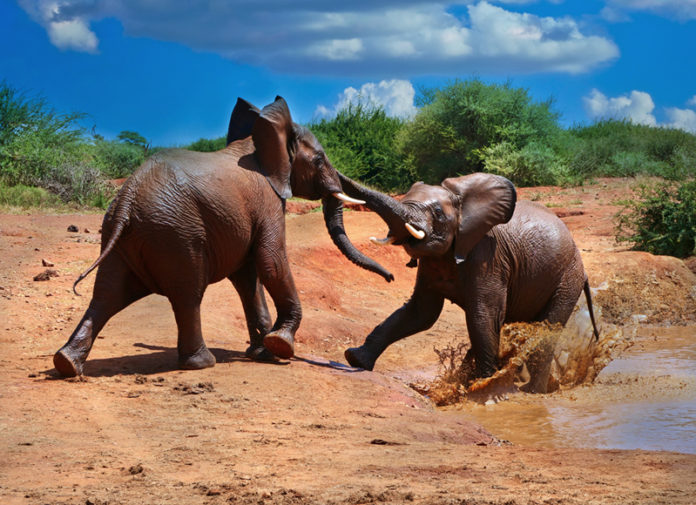by Ken MacAdams
Our driver, Vincent, held the spotlight on the skittish hyenas. The putrid smell of decaying flesh was overpowering. Flies and maggots were no deterrent as these unkempt looking creatures gnawed, ripped, growled and gorged. The giraffe carcass was the result of a kill days before, and while we never saw the animals that brought this tall creature down, we were photographing the ‘clean up’ crew in action. The intensity of the scene kept me spellbound. Capturing images of this adrenaline rush was just part of the life cycle in Africa, and this was only day one.
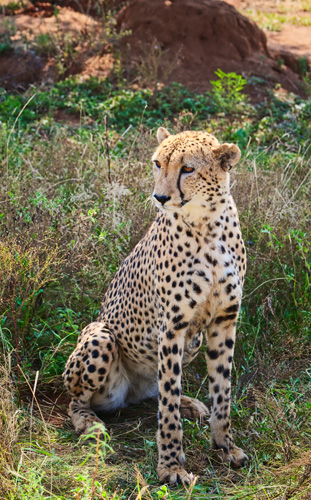 At Texas School 2019, John Hartman presented images from a workshop he’d coordinated to Africa in the spring of 2019. That’s when I learned that Don Dickson, Director of the Texas School of Professional Photography, was leading a Texas School African Workshop Safari in March of 2020. Don had made arrangements with Kevin Dooley of Idube Photography Safaris to lead the Texas School safari groups. Kevin and his wife, Tricia (a South African native), are based in Albuquerque, New Mexico, and spend most of the year leading photography workshops/safaris to different locations around the world.
At Texas School 2019, John Hartman presented images from a workshop he’d coordinated to Africa in the spring of 2019. That’s when I learned that Don Dickson, Director of the Texas School of Professional Photography, was leading a Texas School African Workshop Safari in March of 2020. Don had made arrangements with Kevin Dooley of Idube Photography Safaris to lead the Texas School safari groups. Kevin and his wife, Tricia (a South African native), are based in Albuquerque, New Mexico, and spend most of the year leading photography workshops/safaris to different locations around the world.
Immediately following John’s presentation, I sought out Don – only to find that all slots to the two back-to-back Texas School safaris were sold out. Discouraged but not defeated, I asked Don to put me at the top on his standby list in case there would be a cancellation. Three months later, I got my chance.
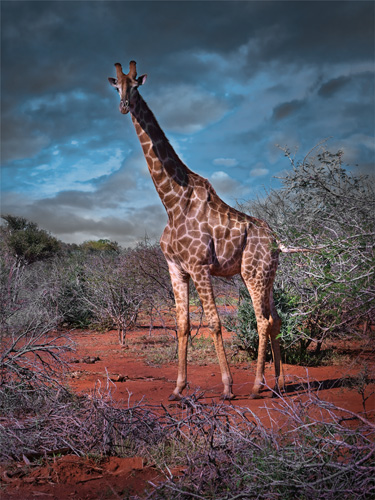 It’s a 14.5 hour flight to South Africa and a 7 hour time difference from the East coast of the United States. To my home in New Mexico, tack on two more hours. To offset that great differential span of time zones, I chose to fly over ahead of the safari date. My wife, Mary, would accompany me on the safari. This was one of the trips we’d written on our bucket list years earlier. We flew to Cape Town and spent several days sightseeing… Table Mountain, Bo Kaap, District Six, and the Castle of Good Hope. We drove south to view the endangered African Penguins at the Boulders and then witness the pounding waves of the Atlantic Ocean release its fury on the Cape of Good Hope. The return drive up the west coast to Cape Town provided views reminiscent of the Amalfi Highway in Italy. Once we were acclimated to the time change, we flew up to Johannesburg. On the evening of March 11, the group gathered together for a “meet and greet” dinner. Our Safari Group #2 numbered 17 people, including Don and Charlcey Dickson and Kevin and Tricia Dooley. The first group, with 24 participants, had been their earlier.
It’s a 14.5 hour flight to South Africa and a 7 hour time difference from the East coast of the United States. To my home in New Mexico, tack on two more hours. To offset that great differential span of time zones, I chose to fly over ahead of the safari date. My wife, Mary, would accompany me on the safari. This was one of the trips we’d written on our bucket list years earlier. We flew to Cape Town and spent several days sightseeing… Table Mountain, Bo Kaap, District Six, and the Castle of Good Hope. We drove south to view the endangered African Penguins at the Boulders and then witness the pounding waves of the Atlantic Ocean release its fury on the Cape of Good Hope. The return drive up the west coast to Cape Town provided views reminiscent of the Amalfi Highway in Italy. Once we were acclimated to the time change, we flew up to Johannesburg. On the evening of March 11, the group gathered together for a “meet and greet” dinner. Our Safari Group #2 numbered 17 people, including Don and Charlcey Dickson and Kevin and Tricia Dooley. The first group, with 24 participants, had been their earlier.
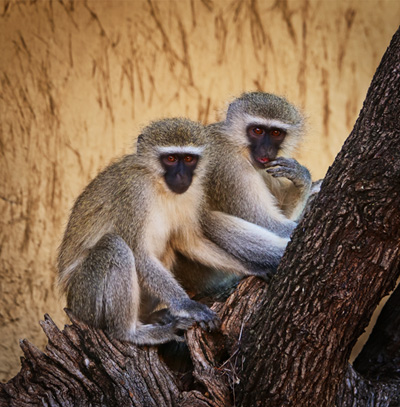 The following morning, we boarded a bus for the first leg of our journey, a visit and overnight stay at the Cultural Village of Aha Lesedi. Set among the rocky hills and bushland north of Johannesburg, we had the opportunity to meet people from Aulu, Xhosa, Pedi, Ndebele, and Basotho origins. We were given a tour of the Village which depicts different traditional tribal compounds, showing the diversity of dress and housing among the early tribes. Kevin arranged for a model shoot utilizing members of the staff dressed in tribal attire. Before dinner, we were treated to a performance of traditional songs and dances. Our overnight accommodations consisted of a comfy, large traditional domed, thatched roof hut.
The following morning, we boarded a bus for the first leg of our journey, a visit and overnight stay at the Cultural Village of Aha Lesedi. Set among the rocky hills and bushland north of Johannesburg, we had the opportunity to meet people from Aulu, Xhosa, Pedi, Ndebele, and Basotho origins. We were given a tour of the Village which depicts different traditional tribal compounds, showing the diversity of dress and housing among the early tribes. Kevin arranged for a model shoot utilizing members of the staff dressed in tribal attire. Before dinner, we were treated to a performance of traditional songs and dances. Our overnight accommodations consisted of a comfy, large traditional domed, thatched roof hut.
Our next morning began the routine we’d follow for the next 8 days… up early for breakfast and on the road. But today’s road would be the last paved one we’d encounter once we reached the reserve. After a quick lunch at the main lodge, we were divided between three jeeps; sturdy 4WD vehicles with three rows of seats and a sun covering overhead.
Kevin and Tricia had selected the Thakadu River Lodge for our accommodations. The friendly staff met us when we arrived with welcoming songs, and each day when we returned from a game drive, someone would meet us with moist warm facial cloths to wipe away the dust of the road! We lacked for nothing while staying at Thakadu Lodge, located on the banks of the Marico River, within the Madikwe Game Reserve. In the Reserve, there are approximately 30 other game lodges. But with 180,000 acres of wild, open land, we rarely saw another vehicle.
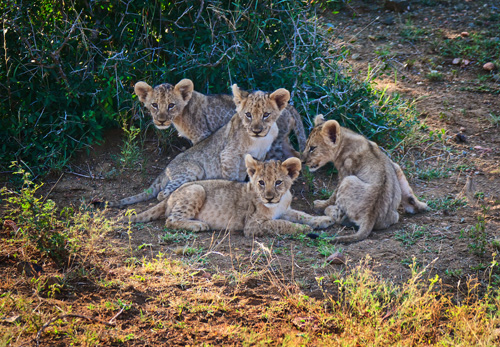
While COVID-19 began ravaging the world, we were isolated in our corner of wilderness. After a wake-up call at 5:00 am, we had breakfast at the lodge and clambered aboard the rigs by 6:30 to catch the first rays of sunlight peaking over the Eastern horizon. Often the jeeps would dispatch in different directions. However, if there was a lion or cheetah sighting, there was radio contact between vehicles. We encountered several sightings of lion cubs but reserve protocol deemed no more than two vehicles be present at a sighting at a time. Our guides were very conscious that too much human presence might intimidate the wild animals in their habitat. Because of the abundance of wildlife sightings, we never returned to the lodge from a morning game drive before 12:30 in the afternoon. After lunch at the main lodge building, we’d have a break to nap, swim, sort images, and recharge batteries.
At 3:00 pm, there would be “high tea” or a snack and refreshments before we boarded our vehicles for the afternoon game drive. Every day, on both morning and afternoon drives, all three vehicles would rendezvous for refreshments and snacks somewhere in the wild, hosted by our drivers. On two occasions, we stayed out in the bush until dark. So, at sundown, the three rigs would gather for a “Sundowner” with snacks, wine, beer, and sodas. Most days we arrived back at camp as darkness settled to partake of a delicious gourmet meal prepared by the lodge cook staff. One evening, a group of teenagers from the local school came and entertained us with songs and dancing while several of our camp staff joined in!
Tourists and photographers go to Africa to see the “Big Five”… Lion, Elephant, Cape Buffalo, Leopard, and Rhino. Although we saw fresh Leopard paw prints in the dirt, this cat proved elusive enough to evade both Texas School groups. However, multiple Cheetah sightings were our consolation! Of the other “Big Four,” we had multiple sightings every day. During our game drives, we spotted at least 25 different species of four legged animals plus Cobra, Python, and a Black Mamba, Africa’s most venomous snake. Only a few got to see the crocodile who lived in the river by our lodge. Birds, hawks, and vultures were spotted every day. There was no lack of material to focus your lens on! At the onset, Kevin reminded us these are wild animals in a wild setting and we may not get to see them all. But everyone in the group was amazed by the quantity of game we encountered. Each vehicle spotted different animals in different places, in different settings, and in different light. We witnessed two lion charges after prey, but neither one resulted in a “take-down.” Several times, we watched lions (and sometimes cubs) snacking on a freshly killed Zebra or Warthog.
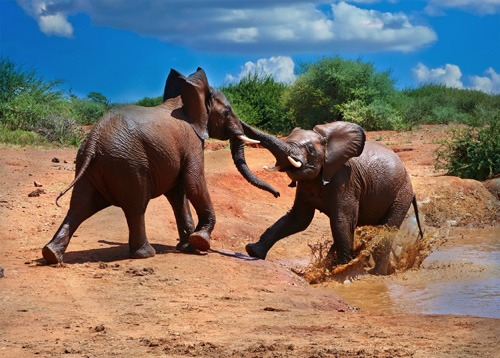 How can something like a safari benefit you as a photographer? First, it pushed me out of my comfort zone. Second, it forced me to get better acquainted with my gear. I learned when a situation required manual focus as opposed to auto-focus. I had to rethink metering; whether I was shooting in the cool light of dawn, the harsh mid-day sun, or the sweet light of sunset. It made me reconsider F-stops and shutter speed. I experimented with selective focal points, multiple focal points, and predictive tracking. For that lion in the shade of a tree, would it be better to spot meter or go full matrix? Composition? Animal groupings? Cropping? Progressing through multiple game drives, I found myself more comfortable and better acquainted with my equipment than when I’d arrived.
How can something like a safari benefit you as a photographer? First, it pushed me out of my comfort zone. Second, it forced me to get better acquainted with my gear. I learned when a situation required manual focus as opposed to auto-focus. I had to rethink metering; whether I was shooting in the cool light of dawn, the harsh mid-day sun, or the sweet light of sunset. It made me reconsider F-stops and shutter speed. I experimented with selective focal points, multiple focal points, and predictive tracking. For that lion in the shade of a tree, would it be better to spot meter or go full matrix? Composition? Animal groupings? Cropping? Progressing through multiple game drives, I found myself more comfortable and better acquainted with my equipment than when I’d arrived.
No one wanted to admit it when we came to our last game drive. We knew the world was shuddering from COVID-19 and reports of flight cancellations were coming in. We didn’t want to return to the “Real World.” As the sun was dipping low, we stopped to photograph a grouping of five Rhinos, then saluted a towering Giraffe. A Cape Buffalo stopped to glower at us, then sauntered on. Earlier, a herd of about 50 Elephants had surrounded our rig, the curious young trumpeting a challenge. Ignoring the childish behavior behind her, the matriarch ambled by, almost brushing the jeep. And the stinking carcass from our first game drive? It had been reduced to a scattered pile of bones, picked clean. Life would go on. We would return home to a different world, our memories full, and our memory cards overflowing.
Don Dickson recently announced plans for another two Texas School Safaris in 2022. Both safaris will be guided by Kevin and Tricia Dooley, of Idube Photography Safaris. The first, March 1-12, will be at the Thakadu River camp in South Africa. The second safari will be in Botswana at Mashatu, March 12-22. You can email Don Dickson for more information at: don@texasschool.org.
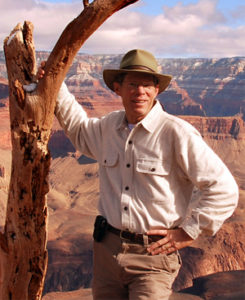 Ken MacAdams is a freelance travel and adventure photojournalist. When not on the road, home is Farmington, New Mexico. For many years, Ken has assisted Texas School as a Wrangler and as a PPA volunteer at Imaging USA. He enjoys giving back to the community by presenting images and talks of his world travels to civic groups, elder care centers, photography clubs, and at the local college.
Ken MacAdams is a freelance travel and adventure photojournalist. When not on the road, home is Farmington, New Mexico. For many years, Ken has assisted Texas School as a Wrangler and as a PPA volunteer at Imaging USA. He enjoys giving back to the community by presenting images and talks of his world travels to civic groups, elder care centers, photography clubs, and at the local college.



